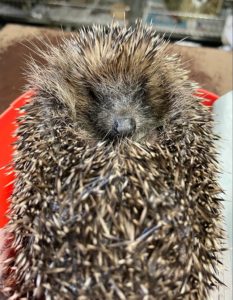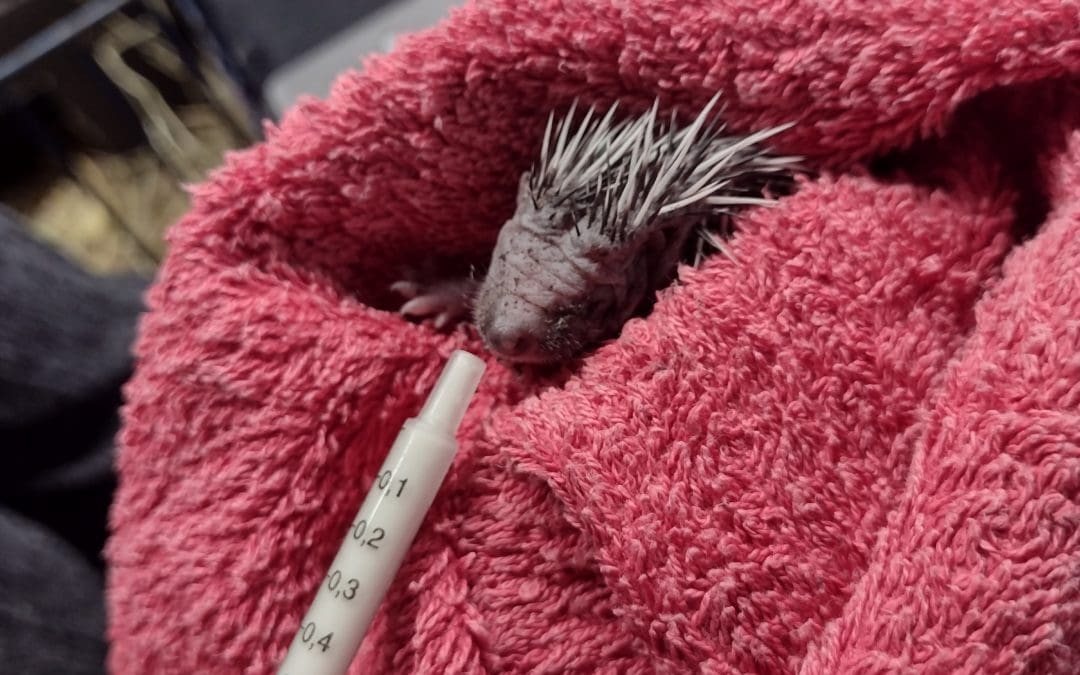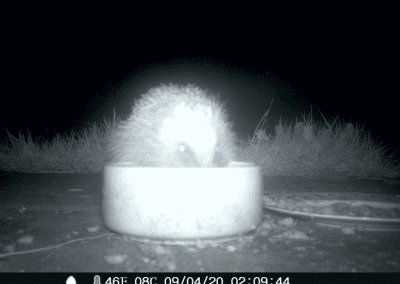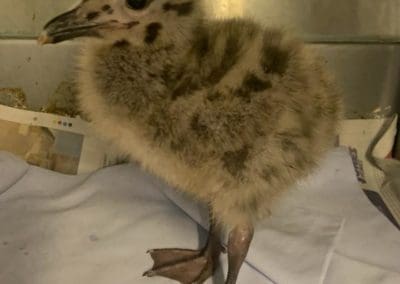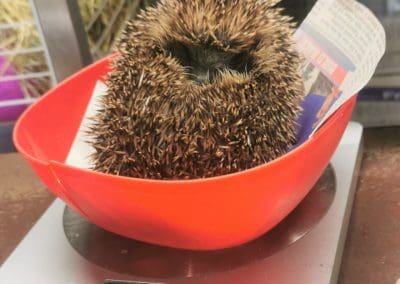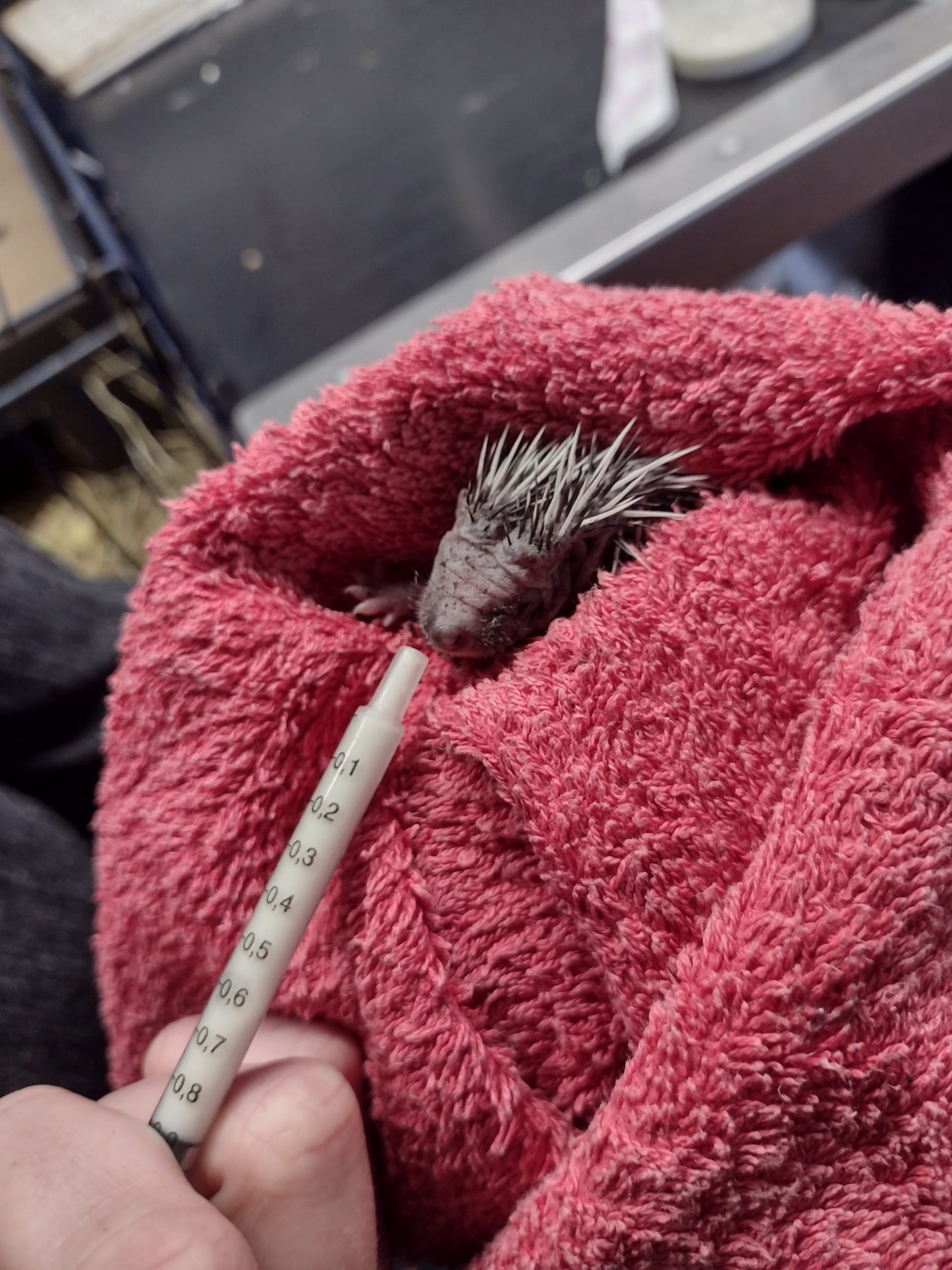
The chaos of May has arrived – with over 70 wild animals being admitted to our wildlife unit this month!
We were finally able to start admitting wild birds, as of the 2nd of May – as the Avian Influenza housing restrictions were eased. Since our doors have been reopened to wild birds, we have had a variety of different species admitted, such as wood pigeons, blackbirds, starlings and collared doves. Along with the 30+ wild birds, the wildlife team have also admitted over 40 hedgehogs – including some very tiny hoglets.
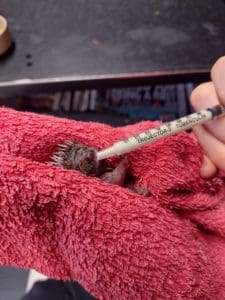
This time of year, is baby season and the wildlife team are not only continuing to take care of the small animals and wildlife in their care but are also taking it in turns throughout the night to hand feed the young hoglets and any juvenile wild birds that are in need of hand rearing. This can mean that staff are having to wake up every 2-3 hours!
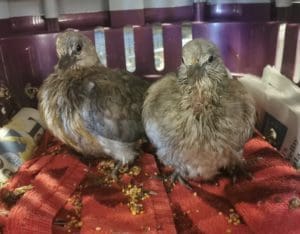
The next couple of months are only going to get busier, so keep an eye out on our social media pages to see what we are admitting into our care.
This month we admitted a hedgehog, that was sadly found tangled up – please remember to dispose of any litter appropriately and cut string before throwing away.
Out and about in May
Given it was World Bee Day recently, I thought it would be interesting to investigate the myth that all bees die if they sting. The truth is, however, that some bees do die while others don’t. In fact, not all of the global 20,000 estimated species of bee are even capable of stinging.
There are more than 500 species of stingless bees, mainly found in the tropics and rather than stinging, they bite. They tend to have very elaborate nest entrances that deter invaders.
Honeybees will most often die as a consequence of stinging humans or other creatures. This is due to the anatomy of their stinger which has a barb which catches under the skin, allowing the stinger to remain in place and continue to pump venom into the sting recipient.
Honeybees, of which there are around 10 species, do not tend to die when stinging other insects or spiders, which tends to happen only if the bee thinks its hive is being invaded. This is because the stinger is generally able to pierce an insect’s relatively thin exoskeleton and can be extracted without incurring damage. This isn’t the case with Asian giant hornets, also known as murder hornets, whose thick outer skin shields them from Japanese honeybees’, instead, these honeybees swarm an invading Asian giant hornet, using the heat generated from fluttering their wings to slow cook their attacker.
Human skin, however, is much thicker than most insects’ exoskeletons, resulting in the stingers become lodged.
When a bee flies away after stinging a person, the stinger remains, and the organs of the gut are pulled and detached, effectively disembowelling the bee, which now has a hole in its abdomen. It might live for several hours after stinging, but eventually it will die as a result of fluid loss and internal organ failure.
Other bees, however, are able to survive after stinging a person, as they have different stingers to honeybees. Bumblebees have a smooth stinger, and are therefore able to sting multiple times without dying.
Other flying stinging insects, such as hornets and wasps, have a similarly smooth stinger, which enables them to attack a target multiple times without dying.
Honeybees, like most bees, are timid when they are away from their hive and have nothing to protect. The only two significant ways to get a honeybee to sting you is to provoke the bee by flapping or swotting at it, so it doesn’t have the option to flee, or by going too near its home nest.
It is also worth noting that not all members of the stinging bee species actually have the ability to sting. Any stinging bee is going to be female, as the stinger is actually a modified ovipositor, or a tubular organ via which a female insect deposits its eggs. Female bees tend to massively outnumber the males.
Female bees are also known to fight as a team when required. If any perceived threat is considered too large for a solitary female bee to manage on her own, she is able to call on other females for help. She does this by releasing an alarm pheromone that other females recognize as a cue to defend the colony.
It is not thought that honeybees are aware that they are going to die when they sting, but under the right circumstances, they are very willing to give up their lives for the defence of the colony. When it comes to protecting the colony or making sure that genes are passed onto the next generation, the instincts that drive those behaviours clearly outweigh any concern that the bees might have for their individual survival.
Wildlife in May
All our reptile and amphibian species are active during this month. Frogs and toads have finished breeding now, with most spawn having hatched.
If you have tadpoles in your pond, keep an eye out for them starting to develop back legs, this signals a sharp increase in protein requirement and their diet now switches to a meat-based one. Newts may still be spawning, and this is easiest to spot at night with the aid of a torch.
While the breeding season has come to a close for our amphibians, things are just getting started among our reptiles. A male adder’s priority when coming out of hibernation, is to produce sperm in readiness for the emergence of the females later in the spring, resulting in them spending the last two months basking rather than feeding. The males will now have left their hibernacula, the places in which they overwinter, and will be actively searching for females with which to mate.
May is a good month to see adders dancing, a fight in which two adult males intertwine, each trying to push the other down.
Late May is also when deer begin giving birth to their kids, calves and fawns, depending on the species. Roe are generally the first to drop their kids, with red and sika calves and fallow fawns following shortly afterwards. Muntjac however, can breed throughout the year.
In the event that you come across a baby deer lying in the vegetation, please do not touch it. It is perfectly normal for mothers to leave their young hiding among tall grass and bracken during the first couple of weeks after birth, and it is very rare for a mother to abandon her offspring. Every year many deer fawns are taken into wildlife rescue centres by well-meaning members of the public who think the youngsters need help. Only intervene if the deer is injured, but otherwise do not touch the fawn and just leave it where you found it, its mother will be nearby.
Underground, the mole breeding season is coming to an end, with most females having already given birth, although the young won’t be seen above ground for another month or so.
Many brown hares will have had their first litter by now, females average three litters per year during a breeding season that runs from February to October.
Did you Know…
A turtles’ shell is connected to its spine.
Slugs and snails hibernate when temperatures drop below 5 Celsius.
Jackdaws pluck dead hair from deer for nesting material.
Please remember to…
Support wildlife at this time of the year, by putting food and water out for breeding birds and other wildlife such as hedgehogs, especially during dry periods. Dried cat or dog biscuits are ideal for hedgehogs ,but avoid fish flavours. Please don’t put milk out for hedgehogs as they are lactose intolerant.
Providing shallow saucers filled with water and small stones are ideal for insects to drink from.
Please remove rubbish from your gardens or local area to prevent wildlife from injury.
And Finally…
Always seek advice from wildlife staff before bringing an animal to the rescue. If an animal is injured, please take it to a vet as we don’t always have a vet on site.

Merchandise

Freshfields Lottery
